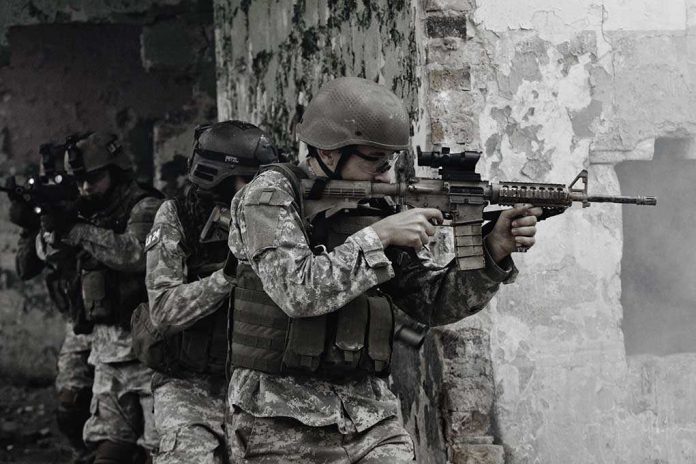🔴 Website 👉 https://u-s-news.com/
Telegram 👉 https://t.me/usnewscom_channel
The Marine Corps’ current structure jeopardizes its ability to conduct an urban assault like Fallujah, raising concerns about military readiness.
Story Snapshot
- The Marine Corps has reduced infantry battalions, prioritizing modernization over urban warfare.
- Force structure changes focus on maritime operations, leaving urban capabilities weakened.
- Experts warn this shift threatens U.S. military readiness for urban warfare.
- Current doctrine emphasizes lighter, more mobile forces, impacting urban combat capability.
Marine Corps Force Structure Today
As of 2025, the U.S. Marine Corps has shifted its focus from large-scale urban warfare to distributed maritime operations. This strategic change comes with a reduction in infantry battalions and the retirement of all tank battalions in 2020. The Marine Corps is now more technologically advanced but lacks the manpower and heavy armor necessary for prolonged urban sieges akin to the Second Battle of Fallujah.
These changes prioritize modernization aimed at great power competition, particularly concerning China. However, this has resulted in a significant decrease in the Corps’ preparedness for high-casualty urban battles. Senior Marine leaders acknowledge that the current force design is not structured for sustained urban combat, a concern for national security experts.
Doctrinal Shifts and Training Implications
The current doctrine emphasizes Expeditionary Advanced Base Operations (EABO), which promote lighter and more mobile forces. While some urban warfare training persists, it does not match the intensity or scale of preparations seen during the Fallujah era. This doctrinal shift could impact the effectiveness of the Marine Corps in future urban combat scenarios, posing risks to mission success and increasing potential casualties.
Despite technological advancements such as drones and precision munitions, experts argue these cannot fully replace the need for mass and resilience required in urban assaults. The Marine Corps’ current focus on lighter forces may leave it vulnerable to adversaries who invest in urban warfare capabilities.
Implications for Military Readiness
The short-term implications of these changes suggest that recreating a battle on the scale of Fallujah would be challenging, with potential for higher casualties and mission failure. Long-term, this vulnerability could be exploited by potential adversaries, affecting U.S. deterrence and credibility on the global stage.
Policymakers might become more hesitant to authorize urban operations, altering American military strategy.
This shift also affects the defense industry, which now focuses on technology and unmanned systems over traditional armor and infantry. The debate over balancing high-tech modernization with traditional combat skills continues, as military training evolves to meet these new priorities.
Sources:
Embleholics: Second Battle of Fallujah
West Point Modern War Institute: Urban Warfare Case Study
Wikipedia: Second Battle of Fallujah
The War Horse: Fallujah Timeline
Marine Corps Times: 15 Years Later
U.S. Marine Corps University: Fallujah PDF
Britannica: Second Battle of Fallujah

